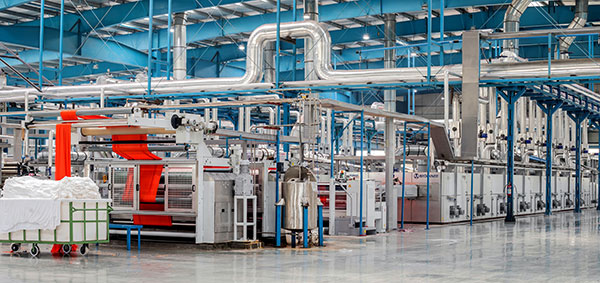Consumption pricing can provide manufacturers an avenue for new revenue streams amid times of high inflation and interest rates.
By Michael Mansard, Principal Director of Subscription Strategy/EMEA Chair of Subscribed Institute
Skyrocketing inflation and interest rates are creating the perfect storm to hinder growth in the manufacturing industry, impeding the ability for these companies to invest in new assets for growth. But there’s an opportunity to take action, by adding more flexible business models that will create new revenue streams and help manufacturers thrive. Instead of running a race to the bottom to stimulate customer demand, recurring revenue models can provide manufacturers with an alternative path to innovate, capture untapped demand and create long-term value.
Surrounded by economic uncertainty, one way manufacturers are doing this is turning to consumption-based models for new revenue streams. Consumption-based models can provide an avenue for manufacturers to be resilient and adaptable while also catalyzing growth. Most notably, consumption-based businesses have experienced up to 22% higher net dollar retention (NDR) and 11% higher subscriber growth year-over-year compared to their peers. Consumption pricing also allows manufacturers to embrace customer-centricity through increased flexibility and recognized affordability that better aligns value delivery and value capture.
Consumption-based models allow manufacturers to monetize Industry 4.0 technologies today. Manufacturers can finally turn all the effort made in collecting data into dollars while also proactively addressing customer needs. Moreover, the increased visibility into usage improves accuracy on revenue predictions and strategic planning.
These models also provide customers the flexibility to use what they need, when they need it. For example, healthcare faces cash flow and capex constraints, which can prevent investment in new digital technologies. To address this challenge, health technology leader Philips launched an enterprise monitoring as a service (EMaaS) model to provide health organizations with patient monitoring support aligned to their goals. EMaaS allows the monetization of the actual usage of the monitoring per patient, per acuity, per day for a predictable spend connected to the hospital’s varying patient volume. This results in a virtuous loop where Philips can align the hospital’s daily needs and long-term goals based on patient volume. Its flexible cost model ultimately aligns better with the hospital revenue model to optimize cash flow management and redirect capital to other revenue generating areas.

Successful implementation of consumption-based models should begin with finance teams to determine and understand the current customer landscape. Finance leaders can support teams to define success metrics and ensure standardization, allowing for margin building and using consumption data to identify areas of improvement.
It’s also important to plan ahead as the transformation in the manufacturing industry can take longer than other industries, given the tangible aspects of products and associated marginal cost of core solutions being sold. Manufacturers may even experience a temporary dip in revenue in the short-term as a company focuses on nurturing customer relationships instead of products sold. Another hurdle includes substantially more complex operations as a result of consumption pricing implementation. For instance, billing and payment operations will have more responsibility to ensure accuracy and may use multiple systems to collect necessary data.
However, these challenges should not deter manufacturers to try consumption pricing, as revenue will eventually return with increased predictability. Consumption pricing prioritizes customer usage to have flexibility and scalability. By delivering tangible value to customers, manufacturers improve competitiveness as they align better with customer demands. Manufacturers can successfully implement consumption pricing and work through the challenges to achieve predictable revenue streams with the right billing solutions and collaboration.
While consumption-based pricing models have proven to improve NDR and increase subscriber growth, transforming a business can be financially daunting in the upfront. Business performance may also alter with consumption pricing as revenue becomes dependent on how often a customer uses or purchases a product. This emphasizes the need for finance teams to be involved with this transformation and to accurately understand business performance and mitigate risks.
Consumption pricing requires increased visibility to view total usage at the end of a billing period, monitor customer usage at any given time and anticipate how much revenue will be gained from the model. Variables such as usage, lifetime of the customers and potential overage charges are all tracked to better forecast revenue. Due to the inherent complex nature of consumption models, manufacturers may even consider revenue automation to reduce errors, risks and audit costs while also reducing the burden on finance and accounting teams. When these variables are closely and clearly monitored, it will be easier to manage unpredictability and understand fluctuations that may occur with consumption-based models.
Manufacturers have the opportunity to grow their businesses with consumption-based models to promote profitability and provide customers with flexibility during times of high inflation and interest rates. While there might be initial hesitation to embrace change, the cost of sticking to the status quo is always higher than the cost of trying. Testing and iterating will help you learn and adjust so you’re in a position to quickly scale when the time is right. The same revolution from perpetual software licenses to SaaS will progressively happen in manufacturing too, so there’s an advantage to starting now.

Michael is a seasoned Subscription Economy business strategist. Since he joined Zuora in 2015, he has been accompanying more than 270 companies globally and across industries in their business model transformation. He currently serves as Principal Director, Business Transformation & Subscription Strategy within Zuora’s Chief Revenue Officer’s group, and is also the Subscribed Institute’s EMEA Chair.
Tune in for a timely conversation with Susan Spence, MBA, the new Chair of the ISM Manufacturing Business Survey Committee. With decades of global sourcing leadership—from United Technologies to managing $25B in procurement at FedEx—Susan shares insights on the key trends shaping global supply chains and what they mean for the manufacturing outlook.